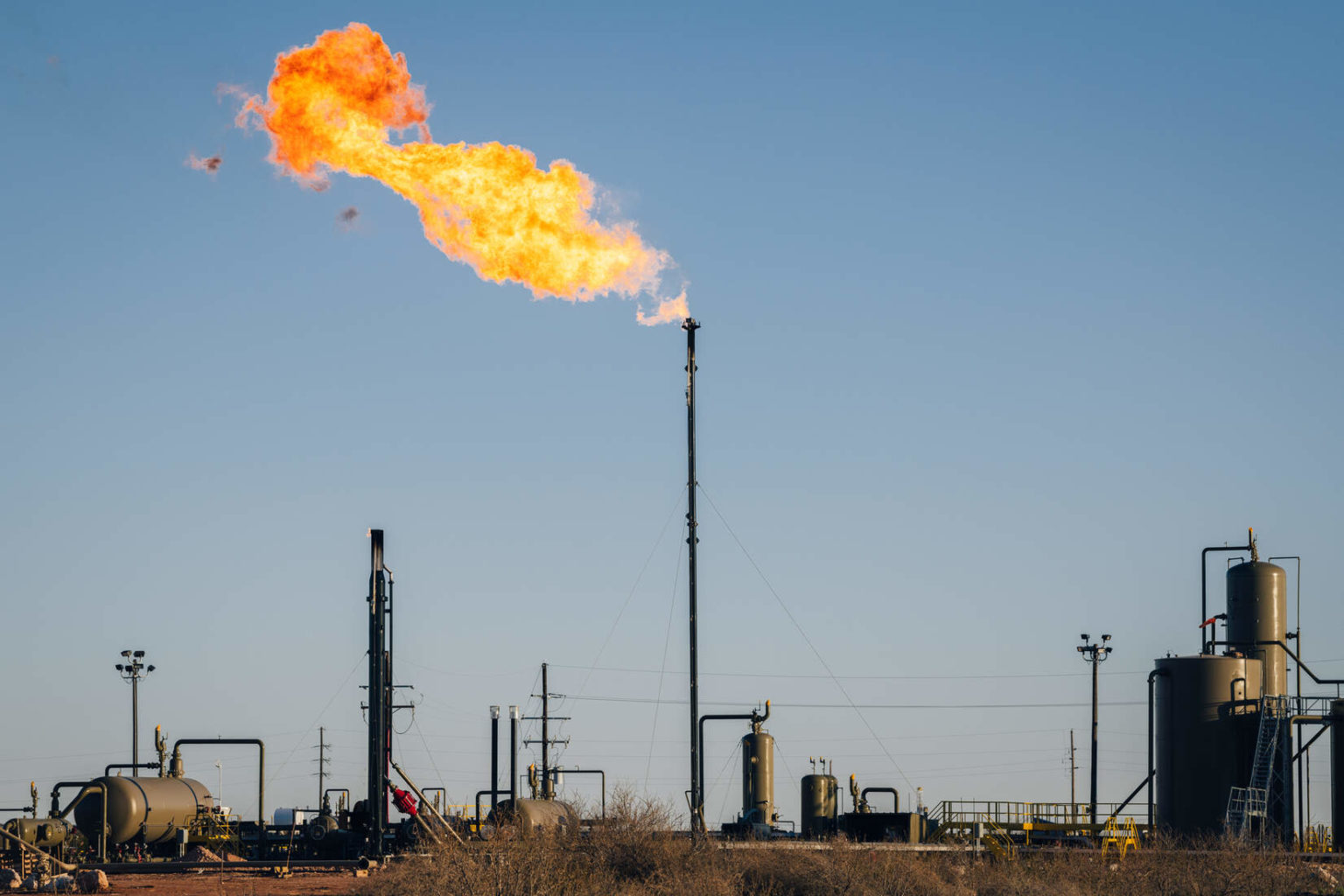A new study by the University of California, Los Angeles reveals that more than half a million U.S. residents live within close proximity of oil and gas flaring events, exposing them to potentially significant health risks. Those impacts are disproportionately felt by communities of color in North Dakota, Texas, and New Mexico.
“There is growing evidence linking residence near unconventional oil and gas operations with negative health impacts for nearby residents, including impacts on fetal growth and preterm birth,” said one of the study’s authors, Lara Cushing, an assistant professor of environmental health sciences at the University of California, Los Angeles Fielding School of Public Health.
Oil and gas production often involves flaring, or the burning of hydrocarbons at the drilling site when the gas cannot be collected and put into a pipeline system. Flaring releases hazardous pollutants, such as volatile organic compounds, carbon monoxide, nitrogen oxides, and black carbon.
The study, published in the scientific journal Environmental Research Letters in February, found that roughly 530,000 people live within three miles of an oil and gas flare. An estimated 83 percent of flaring occurs in three major basins — the Western Gulf (the Eagle Ford shale formation in South Texas), the Williston/Bakken in North Dakota, and the Permian basin in West Texas and New Mexico.
Between March 2012 and February 2020, the study recorded over 407,000 flares from shale operations in these three major basins. The Permian basin in West Texas and New Mexico saw the largest number at 170,962 flares, followed by the Williston (167,235 flares) and the Western Gulf (67,171 flares).
A growing body of research has shown that close proximity to unconventional oil and gas drilling contributes to heightened risk of preterm births. There is also a litany of other potential health risks associated with living near oil and gas operations, such as impacts to the heart, lungs, and nervous system.
“We are shocked to learn from these new findings just how many people are placed in harm’s way by the oil and gas industry’s apparent freedom to use the atmosphere as an ashtray,” biologist Sandra Steingraber, co-founder Concerned Health Professionals of New York, told DeSmog. The Concerned Health Professionals of New York has compiled a lengthy Compendium of scientific and medical findings of the human health impacts from fracking.
“Over half a million Americans living within three miles of a fracking flare — with nearly 200,000 people residing in communities with more than 100 nightly flares — represents a public health emergency,” said Steingraber, who was not involved with the study.
The authors of this latest study looked at people residing within three miles of a flaring event because their prior work found a substantial increase in the risk of preterm birth for pregnant women living with that distance. That risk shot up 50 percent for women exposed to 10 or more nightly flares compared to women who experienced no flares at all and lived within that same distance of oil and gas operations.
“There haven’t been many other health studies of flaring. However, health impacts are plausible given the kinds of pollutants that are released during flaring,” Cushing told DeSmog in an email.
The impacts have noticeable racial inequities. In the Permian basin and Western Gulf, Black communities were more likely to live within three miles of a flare, while in the Williston basin, Native American and Hispanic populations were the most likely to live near flares. Indeed, the study found that more than a fifth of the Native American population in the Williston basin resides within three miles of more than 100 flares.
“Our findings also show that flaring is an environmental justice issue,” said Jill Johnston, an environmental health scientist at the University of Southern California Keck School of Medicine, and a co-author of the study. “We found that a significant number of Black, Indigenous, and Latinx people live near flaring. High rates of poverty and other barriers to health in rural areas — such as a lack of access to health care — could worsen the health effects of flaring-related exposures.”
Flaring remains a menace in the U.S. oil and gas industry, particularly in West Texas, New Mexico, and North Dakota. On March 9, in a presentation to investors, Chevron promised to cut the emissions intensity of its operations, a metric that allows for increased emissions on an absolute basis if production increases. In the same breath, Chevron promised to double Permian oil production to one million barrels per day by 2025, an aggressive target that even competitor ExxonMobil recently dialed back. Exxon now expects to produce 700,000 barrels per day by 2025.
Chevron also said that it aims to end routine flaring by 2030, a goal echoed by the Texas Methane & Flaring Coalition, a group of Texas-focused energy associations formed in late 2019 in response to public pressure to curb flaring. The coalition announced its support for a 2030 goal in February.
A January 2021 report from the nonprofit Environmental Defense Fund found that most routine flaring could be ended with no additional cost to industry. Last year, Colorado enacted regulations that ban routine flaring, although the practice is less common there. And a recent court decision in Ecuador ordering an end to flaring “shows that it can be done,” Steingraber told DeSmog.
But under the vision of Chevron and other Permian drillers, communities living in the shadow of flares face another decade of exposure to hazardous pollutants.
Main image: A gas flare in Loving County, Texas. Credit: Justin Hamel
Subscribe to our newsletter
Stay up to date with DeSmog news and alerts







